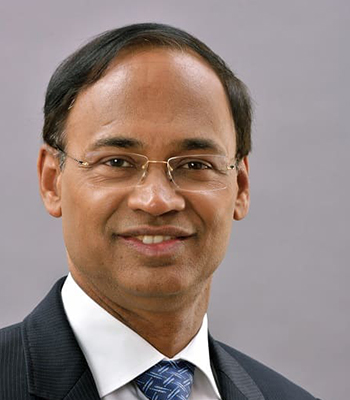- Banks of all sizes have accelerated their digitisation during the pandemic, with both retail and commercial customers not expected to look back.
- Sustainable development based on ESG factors has come into sharp focus as financial firms accept that they have a role to play in the corporate management ecosystem outside of investment portfolios.
- Fiscal stimulus, quantitative easing and loan moratoria will provide relief to banks and customers to weather impact of COVID
As the world moves into the ‘next normal’ of the post-pandemic world, Asian banks say that they are ready for the new challenges it presents. The pandemic has been a catalyst for finance to accelerate their digital transformations, and a time to help clients navigate multiple uncertainties.
Ready or not, the digital revolution has arrived
Accelerating digitalisation of financial services may be the enduring theme of the pandemic. Not only has it coincided with the introduction of digital only banks, but it has led to a rethinking and reconfiguration of traditional brick and mortar channels, as well as the digitisation and automation of trade and supply chain financing.
Peter Jameson, head of Asia Pacific trade and supply chain finance, global transaction services, at Bank of America believes that in the pandemic may have achieved more for digitisation of trade and supply chain finance than the industry has managed to do in the past five years.

Peter Jameson, Head of Asia Pacific Trade and Supply Chain Finance, Global Transaction Services, Bank of America

Mathew Kathayanat, Director and Head of Product and Strategy for Asia Pacific, BNY Mellon
Peter Jameson, Head of Asia Pacific Trade and Supply Chain Finance, Global Transaction Services, Bank of America
“Digitalisation is not new, but it is one of the key by-products of the pandemic and is likely to drive towards a more automated, integrated, and paper-free trade finance environment,” he said.
“In 2020, many clients faced challenges with simple processes during lockdowns and work from home arrangements such as how to transfer paper documents, how to sign documents or obtain official company stamps, how to be onboarded digitally on new services,” he added. “For many clients, the pandemic moved this from being a pure efficiency play, to one of risk management and business continuity – how to keep their business operating despite the unprecedented market situation.”
The automated solutions that banks have been able to drive clients towards are here to stay, so the ongoing integration and improvement will be a challenge for banks in the ‘new normal.
“There is much work to be done —particularly in driving towards a fully digitised end-to-end trade ecosystem at an industry level,” Jameson said. “But the trend will continue, and has been maccelerated by COVID. Fortunately, we ame into 2020 with an existing set of capabilities, which enabled our clients to quickly adapt to the realities of managing through COVID.”
Mathew Kathayanat, director and head of product and strategy for Asia Pacific in asset servicing at BNY Mellon, said that a COVID-19 coerced new normal will accelerate a more competitive environment where efficiency is paramount, driving asset managers and owners to focus on core activities to generate real value. “As asset owners and asset managers seek to shape business models that are responsive to new market realities, having an open ecosystem that provides the flexibility to choose best-in-class systems for their investment activities and capture insights from a wide variety of data sources and vendors will be critical,” he said.
Mathew Kathayanat, Director and Head of Product and Strategy for Asia Pacific, BNY Mellon
“This open, ‘plug-and-play’ model thereby provides deeper intraday insights, and more real-time transparency around trade activities and net asset value (NAV) construction, helping chief investment officers, chief data officers and chief risk officers to achieve a single source of trusted information and insight.”
BNY Mellon has used the year to enhance its liquidity solutions that allow greater access across all lines of business— enabling pooling, optimisation, and concentration across all branches and accounts. The bank will continue down this road of enhancement and digitisation, enabling clients to optimise the value of their liquidity including providing client insight data enhancements.
When it comes to trade, it is applying optical character recognition (OCR) technology to digitally convert print to machine-encoded text, and natural language processing (NLP) technologies to automate manual processes for trade collection services and trade document discrepancy reviews. It is also deploying a custom-built compliance application programming interface (API), which will allow compliance reviews to be completed by leveraging machine learning.
“We believe that an open platform strategy offers our clients choice in the new ‘operating’ normal and there is significant potential in adopting digital technologies – collaboration will be the main fulcrum, exploring partnerships with everyone from small fintechs to large tech firms, as well as working with clients, providers and even competitors to develop flexible, insightful and effective solutions,” Kathayanat said.
Cash management is king
John Wong, head of global liquidity and cash management at Hang Seng Bank in Hong Kong, stressed the importance of banks to maintain strong capitalisation and liquidity amid the crisis, noting that the bank maintains a “healthy and balanced” balance sheet growth.

John Wong, Head of Global Lquidity and Cash Management, Hang Seng Bank Hong Kong

Saket Sharma, Chief Digital and Information Officer, BNY Mellon Treasury Services
John Wong, Head of Global Lquidity and Cash Management, Hang Seng Bank Hong Kong
“We price the assets right in accordance to the related risks involved,” he said. “We have been growing operating deposits with our commercial clients through the introduction of our comprehensive cash management solutions to meet their transaction banking needs.”
Wong is expecting more commercial customers to explore online to offline (O2O) channels to maximise sales.
“We also believe that they will be accelerating their digital journey, both internally to enhance their operating efficiency, as well as externally through connectivity with their banking partner via API or other digital banking channels,” he said.
Maintaining sufficient cash and liquid assets to meet corporates' dynamic cash flow needs will be another key concern and the wider finance sector in the ‘new normal’. In 2020, loan growth outpaced deposits at most of the region’s largest banks. In the mainland, Ping An Bank led the way with an 11.2% rise in its loan-to-deposit ratio.
Still, Wong is looking for the positives to come out of the pandemic including the evolution of API development, such as corporate API, ecosystem partner API as well as open banking API.
“We will continue the development of faster payment services from domestic moving towards international and wider usage of AI and machine learning on cash management and digital banking services to address the changing customer demand.”
Similarly, BNY Mellon’s treasury business has used the pandemic to make its digital solutions easier to access than ever before.
“A core part of our strategy is to focus on clients and market-driven innovation, offering new, enhanced solutions and helping to drive the direction of digital transformation within the industry,” said Saket Sharma, chief digital and information officer at BNY Mellon Treasury Services.
Saket Sharma, Chief Digital and Information Officer, BNY Mellon Treasury Services
In July, the bank went ahead with its collaboration with payments solution provider Early Warning Services to deliver real-time account validation services to financial institution (FI) clients, and offer the flexibility either through BNY Mellon directly, or private label banking relationships.
“We continue to invest in both traditional and digital services to provide holistic solutions that fit into our clients’ business models and enable clients to progress their digital journeys. Through our highly resilient, open framework API’s and microservices architecture, our goal is to help accelerate clients’ journeys towards adopting digital payment services. This comes at a time when the deployment of digital solutions has never been more crucial,” Sharma said.
Sustainable finance is coming sharply into focus
The role of banks and fin in sustainable finance is growing around environmental, social and governance (ESG) factors . The asset and investment management space has long led the way iahead of traditional banking and lending businesses, but it’s clear that part of the new normal will involve all areas of finance to begin looking at it with a closer lens.
BNY Mellon’s Kathayanat calls it an “epochal event in the industry, akin to a Cambrian explosion,” which he believes caused an “ESG explosion” with net flows into sustainable funds quadrupling in 2019-2020.
“This is changing the way that ESG metrics can inform investors with oversight of assets. Our goal has been to help investors manage, monitor and analyse environmental, social and governance factors across their portfolios,” he said.
BNY Mellon has been vocal about the need to collaborate with fintechs and other members of the wider financial ecosystem to solve real business challenges, including ESG concerns.
“We have launched ESG Analytics to equip our institutional investor clients to assess how a portfolio is scoring against key ESG and key sustainability metrics,” Kathayanat added.
In India, Kotak Mahindra Bank’s president of corporate, institutional and investment banking, KVS Manian believes the pandemic has caused ESG to gain in importance.

KVS Manian, President of Corporate, Institutional and Investment Banking, Kotak Mahindra Bank
KVS Manian, President of Corporate, Institutional and Investment Banking, Kotak Mahindra Bank
“Kotak has always been extremely focused on ‘governance’, the ‘environmental’ and ‘social’ part of it is something that we have identified as an important area,” he said.
“In our institutional brokerage business, we have recently hired an ESG analyst and are also working towards giving an ESG rating on each of the products we advise on.”
The bank is also looking to increase its corporate responsibility internally, with initiatives from increasing gender diversity to abolishing the use of plastic from drinking water in its offices.
“We realised it is important to engage business managers and work on a comprehensive programme,” Manian added. “For instance, instead of managing corporate social responsibility (CSR) activities centrally in the bank, our individual business managers are now being given the responsibility to spend 2% of their profit on CSR activities ensuring that social responsibility gets inculcated down the line while also helping us influence our customers on certain ESG parameters.”
For Bank of America, a key focus of its ESG expansion has been on trade and supply chain finance.
“This has become one of the major drivers for decision-making as clients consider their future supply chains and how to integrate ESG principles within them,” said Jameson.
“If anything, the pandemic has shone an even brighter spotlight on the importance of ESG, prompting clients to think about shortening supply chains, manufacturing closer to end-consumers, and driving sustainable practices by participants within their supply chains. We support clients through this process by helping them integrate ESG principles into their trade financing solutions.”
The bank’s global research has found that companies which take ESG factors into account may enjoy advantages over companies that don’t. It found that ESG metrics have shown to be better at signaling a company’s future earnings than traditional financial measures such as its level of debt.
“Over the past two years, we have been integrating ESG capabilities within our supply chain finance (SCF) solution, which allows clients to reflect each supplier’s ESG credentials into their programme financing cost,” Jameson added. “This is an impactful way of using SCF to influence the adoption of more sustainable practices, which in turn helps reduce the reputational risk for our client and help them achieve their own ESG goals.”
If banks won’t take ESG more seriously, regulators will do it for them. Regulators in Hong Kong launched a ‘green finance’ initiative at the end of 2020, with the Task Force on Climate-related Disclosures (TCFD), a body created by the Financial Stability Board, seeking enhanced disclosures for financial institutions in a move to bolster green finance.
The TCFD’s Steering Group has also announced that by mid-2021, it aims to adopt a common set of green finance principles that is being developed by China and the European Union.
All eyes on monetary policy to escape the COVID slump
The impact of stimulus measures and quantitative easing, especially when emerging market economies are also using it to fund fiscal budgets to provide COVID relief for markets, will continue to play a critical role to help the world emerge from the pandemic.
Manian from Kotak Mahindra Bank said that the issues of liquidity, rates and margins, and asset quality of institutions will be closely monitored.
“Three phenomena, to my mind, have lifted several boats: high liquidity, low interest rates, and good capital markets.
These, along with fairly good government support in India for the micro, small and medium sized enterprise (MSME) sector and restructuring packages announced by the regulator and the government have helped reduce the pain in the banking system significantly,” he said.
Manian believes that this has ensured that the pain in the banking system is far lesser than was estimated during the early days of the pandemic. Therefore, on the risk side, for the financial sector, the outlook has become far more positive.
“On the liability side, low interest rates and a flight to safety has ensured higher flow of deposits to select banks which has made them flush with liquidity. However, low interest rate scenarios are not necessarily good for banks, because usually fixed costs remain and the liability franchise becomes less valuable in such times,” he said.
The pandemic has increased complexity in financial services businesses, and this will likely continue well into the recovery.
“Banks need to be extremely alert and on top of their risk management and also control costs. Moreover, good debt capital markets have led to very high-quality borrowers accessing the market and disintermediating banks. Banks therefore need to build significant capital market capabilities. Business models are thus changing to meet these challenges,” Manian noted.
He added to the chorus of executives who say that customers’ appetite for digital has significantly gone up during this period, with banks having to accelerate digital initiatives to keep up with demand. The rapidly evolving business landscape, he said, reminds him of the saying, ‘there are decades when nothing happens, and there are weeks when decades happen’.
“The pandemic has also seen market consolidation, which may gather more momentum. The big are becoming bigger. We see it as a great opportunity and believe we will be one of the gainers in the consolidation story,” he said.
Kotak is beginning to see traction in the secured side of its loans business such as home loans and SME loans, and we are beginning to press the accelerator on some of these segments. It continues to remain ambitious on the liability side.
“In India, I think that the deficit will be much higher than usual. I think we’ll see the central deficit expand from 3.5% and inch closer to 5%. Given the higher deficit as well as supply side constraints due to increasing demand, there is potential for an increase in inflation. However, getting higher growth is probably a higher priority for the government and regulators just now than inflation and all efforts will probably target growth for now,” Manian said.
“India’s fiscal deficit does not give it much wriggle room and therefore India’s fiscal programmes have not been as large as some of the developed countries. However, the stimulus has been extremely focused and targeted.”
The central banks of other regional economic powers have been resisting the urge to use their toolkit given markets being buoyed by the rollout of a vaccine. Thailand, the second largest economy in Southeast Asia, has so far put quantitative easing QE measures on hold as it hopes that recent developments surrounding COVID-19 vaccines will revitalise tourism in the country that relies so heavily on it.
If 2020 had given a unique set of issues for the world of finance, its aftermath in 2021 may present a whole different set of challenges.




All Comments